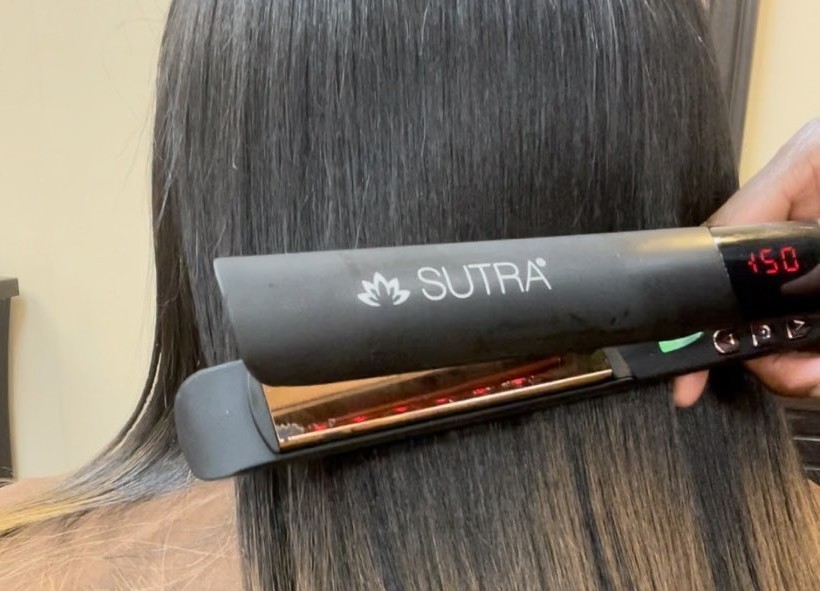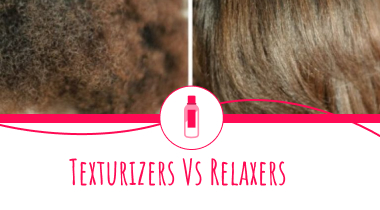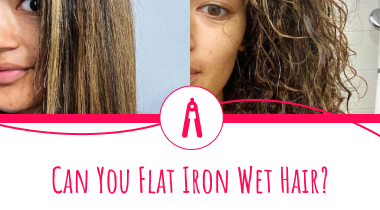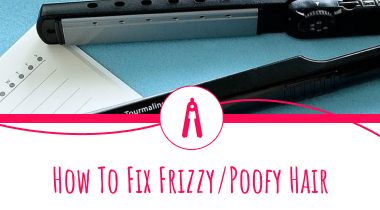Silk Press Vs Flat Iron: Which One Is Best For Your Hair?
Silk press vs flat iron, what’s the difference? If you’ve been hearing the term silk press everywhere and you’re dying to know what it means, you’ve come to the right spot.
A silk press is a technique for hair straightening, but what does it have in common with flat ironing?
Keep reading to find out what these two terms mean, their pros, cons, effects, and the suitable option for your hair.
Silk Press
What is the difference between a silk press and a flat iron? First of all, these two terms don’t even fall into the same categories. A silk press is a method/technique used for straightening coily, curly, kinky hair, while a flat iron is a hot tool that serves many different purposes.
The history of the silk press starts with a hot comb, a tool that isn’t in use today. In addition, the only hairstyle you can get with this method is a straight, silky, shiny mane.
Although a silk press is done with a flat iron, this is not the same iron you already have at home. This technique is usually performed at professional hair salons, with a flat iron meant for that purpose.
This tool needs to have high heat settings between 420 and 450 F degrees, while irons for at-home use usually go up to 400 F degrees. The technique used for a silk press and for flat ironing is the same, the main difference is the use of higher heat for a silky smooth and shiny finish during the press.
Now that we’ve answered the question “What is a silk press for hair?”, it’s time to discuss the pros and cons of this procedure.
Pros:
- Long-lasting results;
- Silky smooth, bouncy hair that always looks fresh;
- The hair is very shiny and looks polished;
- Recommended for ladies with thick, coarse, curly hair.
Cons:
- It uses high temperatures to leave your hair smooth and straight;
- You can do it every three weeks, but you’ll be exposing your hair to a lot of heat;
- It’s recommended that you do it in a professional hair salon;
- You need a special flat iron that can reach high temperatures;
- It’s not the best alternative for ladies with thin hair.
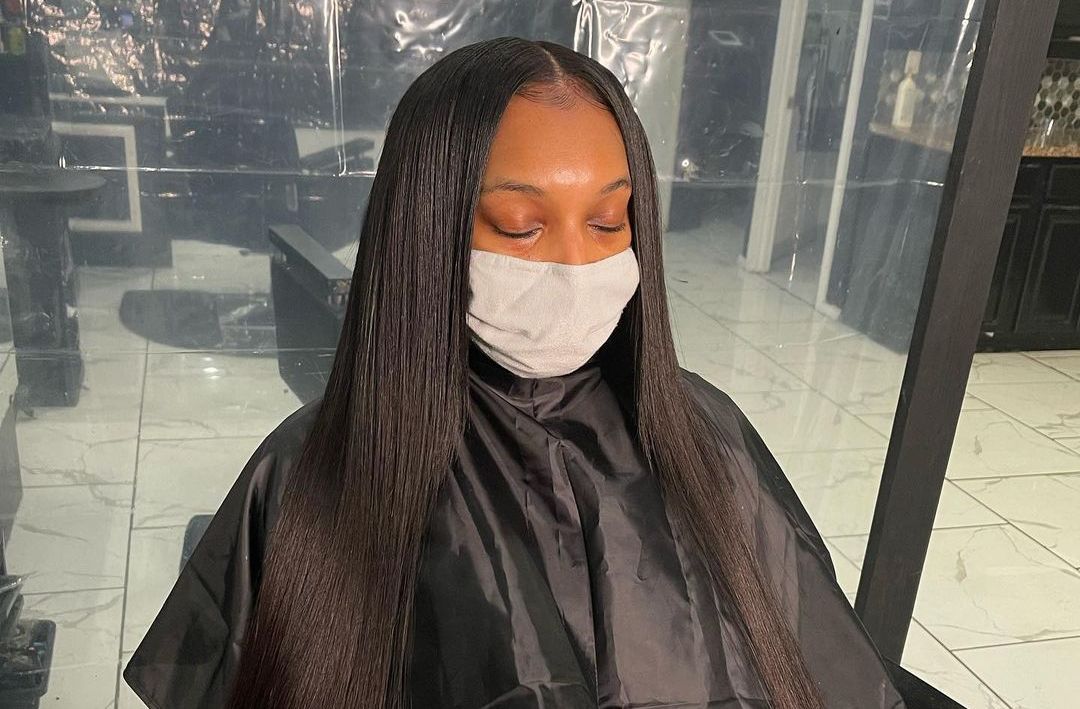
Silk pressed hair
Tips From Hairstylist
Want to know how to press hair with a flat iron? Back in the day, this technique used a hot comb, which is now substituted with flat irons. Although the best option is to go to a professional hair salon, you can perform this procedure at home as long as you have the right tools and follow the right steps to protect your hair.
For this purpose, you need a high-grade flat iron with a temperature between 420 and 450 F degrees. First, start with an excellent heat-protectant that will prevent or lower the possible heat damage.
Next, you should also apply a nourishing hair serum that will leave your hair shiny and smooth. Finally, you can also add smoothing shampoos and conditioners as a part of your routine.
Flat Iron
A flat iron is a hot tool made with two plates and a handle where you can turn the tool on and off and adjust the settings.
The main purpose, as the name suggests, is to straighten hair, however, you can use it for many other hairstyles.
These days irons are a go-to tool for ladies when they want to create beach waves, curls, classic waves, etc. One of the advantages of flat irons is that they offer a wider variety of hairstyles, and not just straightening.
The conventional flat irons for at-home use generally reach a temperature between 375 and 400 F degrees. The motions you perform when straightening your hair are the same for both ironing and a silk press; the only difference is the tool.
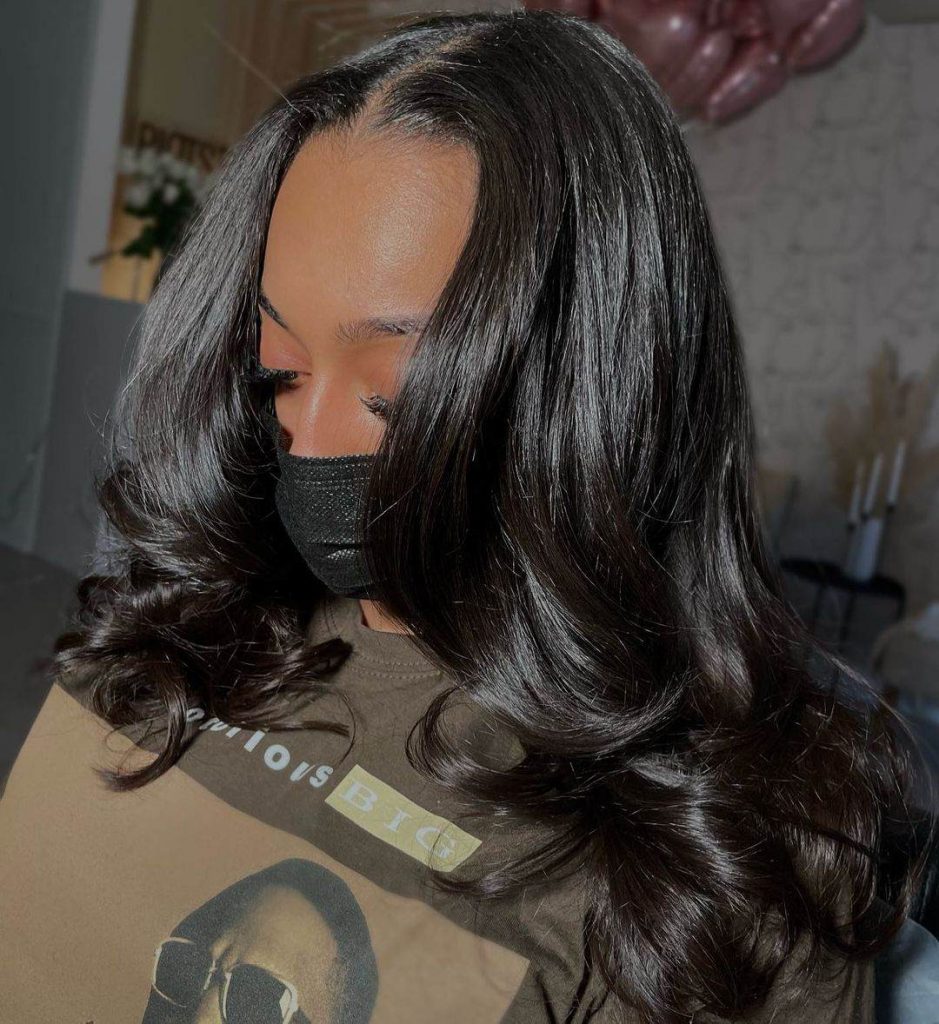
Flat ironed hair.
Pros
- The heat used is lower than the one used during a silk press;
- The results are more natural, and the hair has more texture ;
- You can straighten your hair whenever you want;
- There are many affordable flat irons on the market with an excellent quality;
- It’s recommended for all hair types and lengths.
Cons
- The finish is not as shiny, smooth, and silky as with a silk press;
- The results last only a few days.
Tips From Hairstylist
Most of you already know how simple it is to use a flat iron. What ladies often forget is that you have to protect your hair with a heat-protecting product to minimize the heat damage.
Next, research the best heat temperature, plate size, and material for your hair type, and don’t overdo it with high heat.
Flat Iron Vs Silk Press FAQ
Does Silk Press Damage Your Hair?
When done professionally and with the right protective measures, a silk press is generally a safe method for straight hair. However, since you’ll be exposing your hair to high heat, there is a chance that you’ll damage it.
Can You Use Any Flat Iron For A Silk Press?
No, you have to use a high-grade professional flat iron meant for the purpose. During a silk press, the iron releases higher heat and that’s why the results are smoother, sleeker, shinier.
Can I Do a Silk Press At Home?
Yes, you can but you have to own the right equipment. First of all, you need a flat iron for silk press that will reach higher temperatures (420-450 F degrees) and the right products.
Remember to use smoothing, nourishing shampoos and conditioners, heat-protecting products, and a hair serum or oil for extra hydration and shine.
How Often Should You Silk Press Your Hair?
The recommended number of silk presses per year is three to four. You should wait at least three weeks before having another silk press done to your hair. Your hair needs time to recover from the heat exposure; therefore, you shouldn’t overdo it.
Also read:
- Best Hair Straightener for Black Hair
- Croc Flat Irons Reviews
- How Long Does Silk Press Last
- Shiseido Hair Straightening 101
- Best Babyliss Flat Irons
- How to Clean a Flat Iron
- Curling Iron vs Flat Iron
Conclusion
How to press your hair with a flat iron? You can either get a professional-grade flat iron or turn to your hairstylist and get your hair done by professionals.
If you’re looking for temporary results, you should go for the flat iron, and if you prefer results that last longer, you can do a silk press. Let us know what you decide!
Table of Contents
ToggleAllyson Carter
Ally is a professional hairstylist with more than 6 years of experience, but hair has been her passion since early childhood. Here, at Hair Spies, she blogs about all things hairdressing, hair tools, and everyday hair care. Read more about Allyson here.
